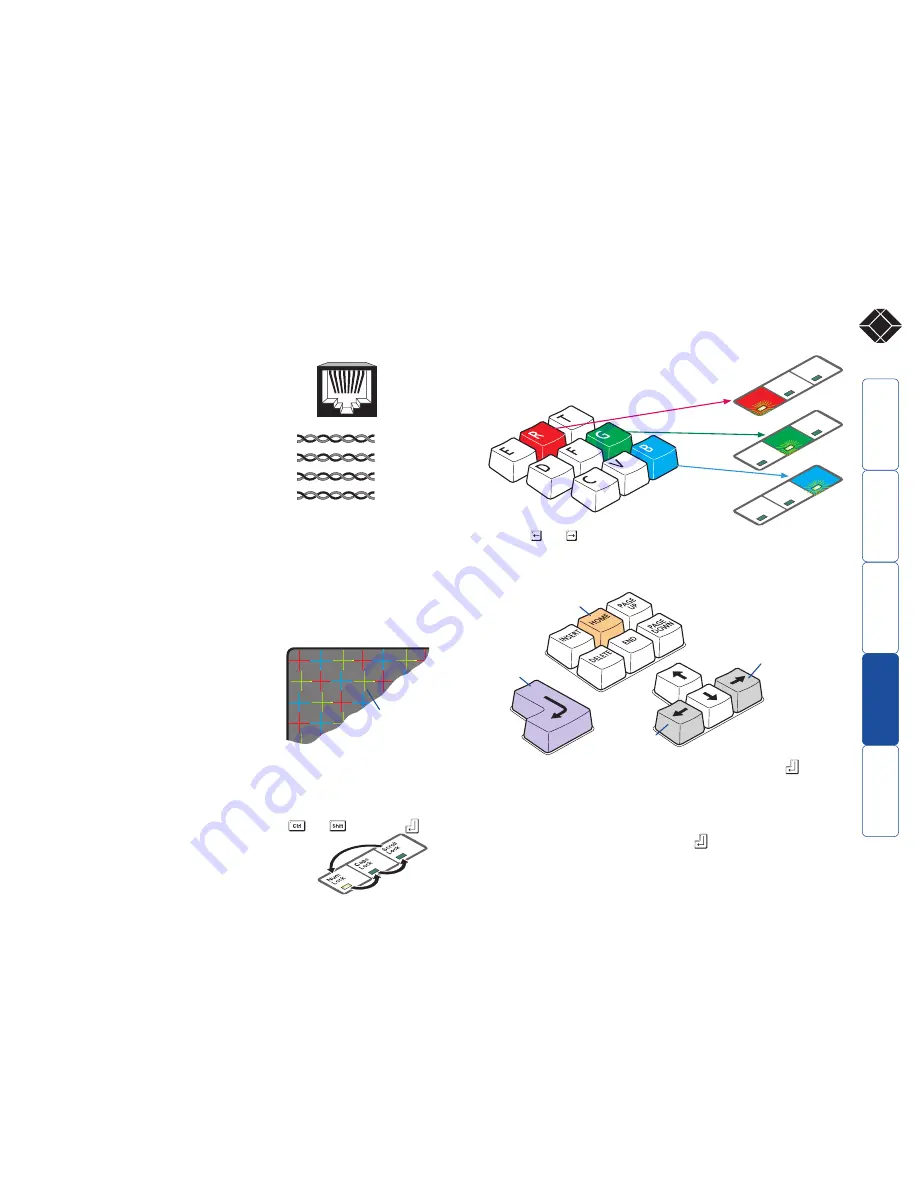
20
®
Skew adjustment
The twisted pair cabling supported by the Wizard modules (category 5, or higher)
consists of four pairs of wires per cable. Three of these pairs are used by the
modules to convey red, green and blue video
signals to the remote video monitor. Due to the
slight difference in twist rate between these
three pairs, the red, green and blue video signals
may not arrive at precisely the same time. This
is visible as separate colour shadows on high
contrast screen images. This effect is particularly
apparent when using higher screen resolutions
and some types of category 5e cables.
In this situation, the modules provide internal
skew adjustment that can help to rectify the
situation. The skew adjustment works by
delaying or advancing the timing of any of the red, green or blue colour signals
so that they are all delivered to the monitor at precisely the same time. For best
results a test pattern is provided and this should be displayed when using skew
adjustment.
IMPORTANT: The skew adjustments affect ALL video channels equally. It is
important to ensure that all twisted paur link cables are of equal length and
have similar twist characteristics.
To use skew adjustment
1 Insert the supplied Installation CD-ROM into the CD player of the computer.
2 Within Windows, use the
My Computer
option (usually available as a desktop icon
or within the Start menu) to view the
contents of the CD-ROM. Double-click
the
Skew
entry to display the standard
test pattern. If necessary, maximise the
application window so that the image fills
the screen.
The screen will show a series of fine red,
green and blue crosses which should all be
in line, vertically and horizontally. Skew affects the horizontal placement of
the colours and using this pattern it is much easier to discover which, if any,
colours are being adversely affected by the twisted pair cable run.
3 Simultaneously, press the hotkeys (by default,
and
) along with
to enter configuration mode.
The three keyboard indicators (‘Num Lock’, ‘Caps Lock’
and ‘Scroll Lock’) will now begin to flash in sequence.
4 As appropriate, press either the R, G or B keyboard keys to select the
appropriate colour channel. Corresponding keyboard indicators
will flash rapidly to show which channel is currently selected
for adjustment: Num Lock for Red, Caps Lock for
Green and Scroll Lock for Blue.
Convergence test
pattern showing the
RGB crosses. In this
case, the green signal
can be seen out of
line with the other
two colours.
5 Press the and keys to retard or advance the timing of the selected
colour channel respectively. On screen you will see a change in the position
of the selected colour crosses in relation to the other two.
Num
Loc
k
Caps
Loc
k
Scrol
l
Loc
k
Num
Loc
k
Caps
Loc
k
Scrol
l
Loc
k
Num
Loc
k
Caps
Loc
k
Scrol
l
Loc
k
Advance
colour
timing
Retard
colour
timing
Restore
default
skew
settings
Exit image
controls
and save
settings
6 When the selected colour crosses are correctly positioned, press
to
exit that colour channel. The keyboard indicators will return to flashing in
sequence.
7 If required, repeat steps 4 to 6 to select and adjust any colour channel until
the vertical lines of the red, green and blue crosses are all aligned.
8 When all colours are correctly aligned, press
to exit configuration mode
and permanently save all settings.
Note: Once you have made a skew adjustment, it may be necessary to re-
adjust the image controls to attain an optimum screen image.
1 2 3 4 5 6 7 8
8
6
5
2
8
6
5
2
Data signal
Red
video signal
Green
video signal
Blue
video signal
7
3
4
1
7
3
4
1


























